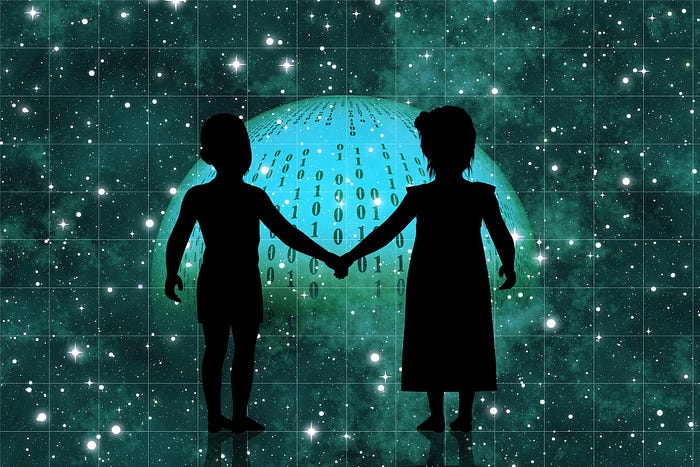Educating the Citizens of the Universe
“Your lessons bring meaning to my life” — student

As a parent of three, and a long-time space science and astrobiology educator, I have been thinking about this all the time — how do we prepare our children for life in an ever-changing, unpredictable world, unexplored yet by human species? While this question sounds somewhat outworldly, it is not.
We are changing the world around us at an unprecedented pace, entering the uncharted waters of the future. Yet our K-12 education rarely focuses on questions of our survival as a species and our resilience in the face of looming challenges. Rather, most people see education as a path to individual success. But such thinking is outdated. As we are disrupting ecological niches on our planet and altering the works of our brain and body with new medications and biotechnology, for better or for worse, we need to invite our children to our conversations, help them notice emerging patterns, model responsible and mindful ways to manage our problems, and raise their ability to withstand the upcoming storms.
So, let’s take a look at some of the planetary issues we are facing today.
The word “terraforming” is usually reserved for changing the climate, atmospheric composition, surface topology and ecology on other planets. However, this is exactly what we are doing to our planet now. Mindful, deliberate terraforming requires well-thought-out planning, a big picture view, and a deep, system-level understanding of the processes affected by our actions. We are not particularly good at that yet.
While changing and disrupting the natural cycles of the planet, we are uncovering new mechanisms of planetary balance, new complexities and feedback loops; we are also getting a better understanding of our powers. Unfortunately, some of these mechanisms may turn out to be too sensitive and fall apart as we are tinkering with them. We need to help our children to see the big picture, to simulate their actions first, and act only after they understand the consequences.
On top of that, our population growth rate is unprecedented. The exponential growth of any species strains environmental resources — and humans are no exception. The resulting overcrowding may result in pandemics — as we are now witnessing with the coronavirus — and eventually, the fight for resources. Do we want such a fate for our children? Or can we show them that our survival as the human species depends on our ability to work towards a common goal, and to see ourselves as one planetary civilization?
This brings up another question: Who are we? We are rapidly gaining the power to change ourselves. This may come in handy if we talk about getting fit for living on another planet — but it may also completely alter the human species as we know it, in a very short time. What future is awaiting humanity? Should we welcome the change or should we be afraid of it? Our children are the ones who will have to make the hard decisions, and we need to prepare them to weigh the trade-offs.
In addition to the potential split of the human race into several genetically modified branches, we are witnessing the birth of yet another intelligent species on this planet: artificial intelligence. Our children will grow in an environment where they will have to develop ways to understand and trust a non-human mind. And while AI may have the ability to communicate with humans, we do not know what new powers it will grant us, what risks it will carry, or how it will affect civilization.

Such thoughts bring me back to the reason why I teach astrobiology to young children.
As the complexity of the world is unfolding, astrobiology education may come to the rescue. One of the fastest-growing and most interdisciplinary sciences, astrobiology deals with all of the above questions. It challenges our unstated assumptions about ordinary things. As a space science, it deals with unknown worlds. It is concerned with the emergence of life and life-like complex, interconnected structures. It bridges stars and cells, cognition and AI, space law and telemedicine, geology and paleontology, genetics and engineering. And somewhat counterintuitively, it constantly brings us back to Earth, literally and figuratively, making us rethink our strategies and opening new possibilities for progress.
I teach middle-school students who come to me from all over the globe. Their time zones and economic, ethnic, cultural and family situations differ drastically. But they don’t care about such minor distinctions. Instead, they come together to ponder the problems we all face as one human family. Or in the words of one of my students, “Your lessons bring meaning to my life.” And this gives me hope.
***
About the author: Julia Brodsky is an astrophysicist by training, former NASA astronaut instructor, private school teacher, and mom of three children. She is a founder of the educational startup Art of Inquiry.
